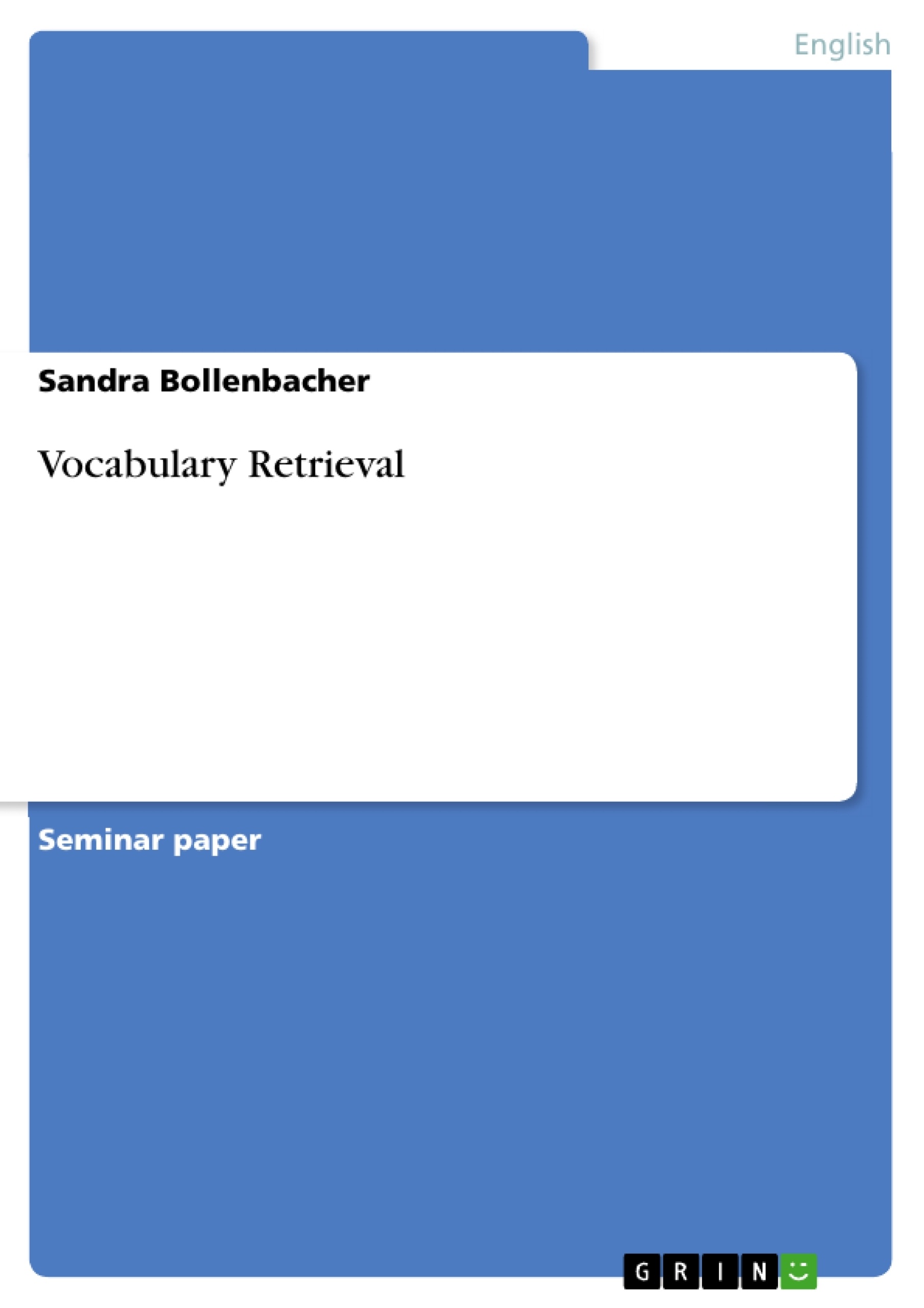The crucial question concerning vocabulary retrieval is how speech is produced: how the right sentences, words, syllables and phonemes are chosen to express the concept of what one intends to say. As the progress of choosing the right units is a passive one and happens in the dark of our brain, scientists can’t watch it and people can’t explain how they exactly produce speech, either. Therefore another way of exploring this topic was needed and eventually found: speech errors. Whenever someone produces a word, syllable or phoneme he didn’t intend to, it enables us to cast a glance at the production of speech. The main part of this term paper will deal with the great number of types of speech errors produced in different stages of speech production, showing us what exactly happens at these stages.
Inhaltsverzeichnis (Table of Contents)
- Introduction
- The Memory for Speech
- Models of Speech Production and Evidences for them
- The Two-Stage Model
- The Elaboration of the Two-Stage Model
- Slip of the Tongue
- Grammatical Encoding Errors
- Grammatical Encoding Errors: Inflection Infelicities
- Phonological Encoding Errors
- The Networked Spreading Activation Model
- The Tip of the Tongue Phenomenon
- Malapropisms
- Slip of the Tongue
- Aphasia
- Dichotic Listening Test
- Language Areas
- Brocha's Aphasia
- Wernicke's Aphasia
- Conduction Aphasia
- A Study about Speech Errors in Everyday Life
- Most Common Speech Errors
- Differences in Errors between the Mother Language and a Foreign Language
- Conclusion
Zielsetzung und Themenschwerpunkte (Objectives and Key Themes)
This term paper explores the process of vocabulary retrieval by examining speech errors. The paper aims to understand how the brain selects the right words, syllables, and phonemes to express intended meaning, and how these processes can be revealed through errors in speech production. This analysis focuses on the different stages of speech production, using various models and evidence to shed light on how the human brain produces speech.
- Speech production models
- Speech error analysis
- The role of memory in language production
- Different types of speech errors
- Aphasia and its impact on language production
Zusammenfassung der Kapitel (Chapter Summaries)
The paper begins by introducing the concept of vocabulary retrieval and the use of speech errors as a window into the process of speech production. It then delves into the memory for speech, discussing the distinction between short-term and long-term memory, and the role of semantic memory in storing words and concepts.
The paper further examines two major models of speech production: the Two-Stage Model and its elaboration. It describes the stages of conceptualization, formulation, and articulation, highlighting the complexities involved in grammatical encoding and lexical selection.
The paper then explores the Networked Spreading Activation Model, examining the Tip of the Tongue phenomenon and malapropisms as evidence for this model. It also discusses aphasia, including different types of aphasia and their impact on language production.
The paper concludes by investigating a study on speech errors in everyday life, analyzing the most common errors and exploring differences in errors between native and foreign languages.
Schlüsselwörter (Keywords)
This term paper focuses on the keywords of vocabulary retrieval, speech production, speech errors, language models, memory, semantic memory, grammatical encoding, lexical selection, aphasia, and language disorders.
- Quote paper
- Sandra Bollenbacher (Author), 2006, Vocabulary Retrieval, Munich, GRIN Verlag, https://www.grin.com/document/205547



